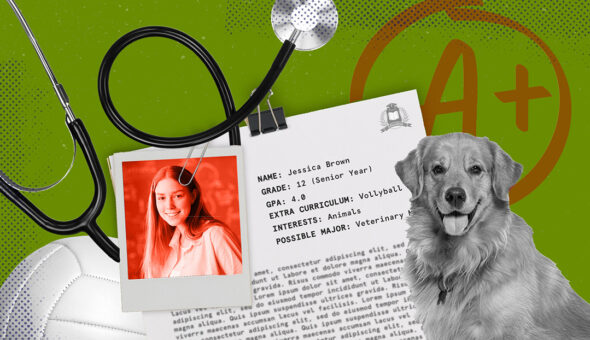“A decade doesn’t always seem like a long period of time. But when the task force discussed medium- and long-term contingency plans, it was immediately clear that quite a lot had changed,” said Carey Manzolillo, director of communications at Albright.
One of the biggest challenges was the unprecedented government response, with new directives coming on a near-daily basis. Decisions to shut down all nonessential and non-life-sustaining businesses in states across the country left colleges and universities scrambling to revise their action plans — and, therefore, their crisis communications plans — on the fly.
“While we have endured crises, none have caused such a sudden and long-term disruption to our operations as the coronavirus”
“Some written plans were changed or completely scrapped – while we were writing them – because of announcements made during state press conferences,” Manzolillo said. “At one point, we used a white board to rough out three completely different plans based on possible scenarios. An hour later, we moved forward with a hybrid fourth plan.”
The near-constant change led to a deluge of questions from constituents.
“The main challenge was keeping up with the changing kinds of questions parents and students had, as they changed quite understandably every time we made a change, which sometimes happened on a day-to-day basis,” said Gabriel Welsch, vice president of marketing and communications at Duquesne University in Pittsburgh.
But even with the most responsive team and the most up-to-date information, it is virtually impossible to anticipate every question that may come up in a crisis, let alone one of this magnitude.
“You’re never going to be prepared to answer every question coming from all constituents, but you can set and manage expectations for when decisions will be made and how they will be communicated,” said Jennifer Umberger, associate vice president for marketing and communications at Bloomsburg University. “Acknowledging that there are more questions than answers is always a good thing. It lets people know they’ve been heard and that we are responding as soon as we have reliable, accurate information.”
Given the volume and variation of questions that came flooding in, Welsch said, it quickly became apparent that his staff needed to employ the help of their colleagues in areas such as student life, the provost’s office and finance.
“We identified senior leaders in those areas who committed to answering questions directly, and we started sending emails to them,” he said. “Because we had by then stabilized many of our action plans, we could provide good on-the-ground information to people and get answers more quickly.”
Having a firm grasp of all crisis operations was helpful to Albright’s communications team, Manzolillo said.
“While essential personnel on campus were fit-tested for safety equipment and completed a step-by-step walk through — from students scheduling flu-testing appointments, through quarantine, isolation, room cleaning in the residence hall and personal material gathering, to food delivery, technology capability and trash removal — faculty and nonessential staff explored how they might work remotely and deliver all-online classes,” she said. “The communications office was working on both fronts. We needed to understand exactly what the process was for every stage of change, in order to clearly share it with the campus community.”
Betzner and Santos said they did their best to stay ahead of the curve so that they were being more proactive and less reactive.
“We started with regular messaging from the Emergency Management Team about our planning, preventative measures for campus and updates on the virus,” Santos said. “Then we were instructed to tone it down to deter any panic or concern. Then, just before spring break, it ramped up and we were suddenly being asked to catch up. In retrospect, we should have kept up the momentum.”
Betzner said Temple’s marketing and communications team began planning for the crisis in earnest three weeks before the university sent everyone home.
“We dusted off our plans and updated everything, like home and cell phone numbers of all staff members,” he said. “We made sure everyone had remote access to the systems they needed, plus backup staff in case they became unable to perform strategic functions. We started weekly virtual meetings with chief communicators from the schools, colleges and divisions across campus to make sure everyone else was plugged in and getting ready.
All that preparation made a big difference in the success of their response.
“Some called us alarmist,” Betzner said. “We called ourselves prepared.”
With the immediate crisis behind them, it’s unclear what comes next for colleges and universities. Crisis communications plans will be updated, for sure. Now, much bigger obstacles lie ahead.
“No one expected a third of the nation to be sheltering in place right now,” Manzolillo said. “No one expected that admissions would need to go fully online when most high school seniors are making final decisions and visiting campuses.”
In Part 2 of the series, we’ll assess the communications lessons that were learned, and the recommendations that these and other administrators have based on those lessons.








